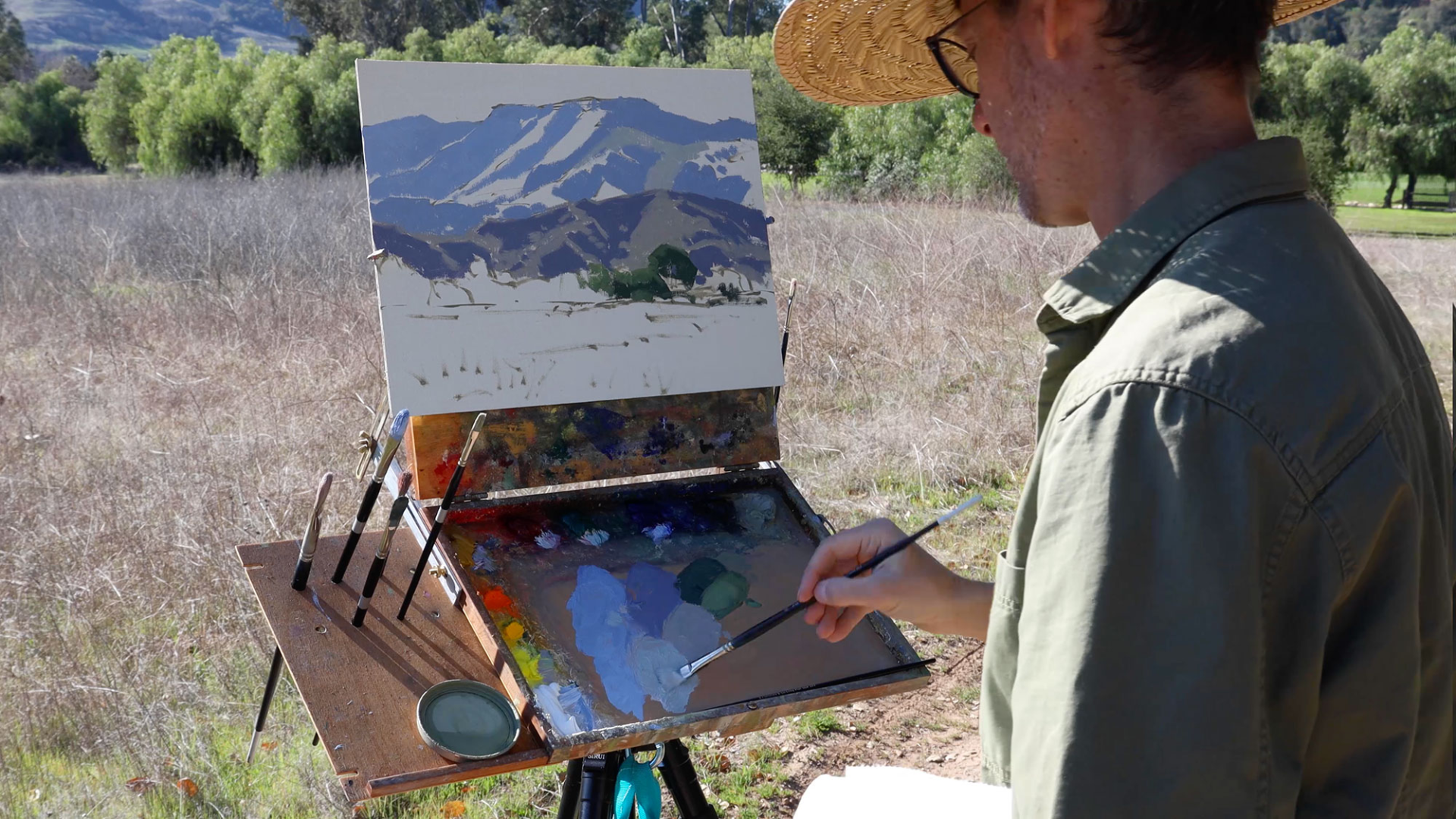Asking Questions

When we’re painting on location and faced with the task of translating our chosen three-dimensional scene onto our two-dimensional canvas, questions come up.
“How can those distant mountains be blue when I know they’re covered in green trees?”
“How is it that dark pavement can look so bright in the sunlight?”
“That yellow house in the background can’t be painted in such a warm color, can it?” Shouldn’t warm colors only appear in the foreground of my scene?”
Follow the Rules?
Perhaps you noticed that all of those example questions address “rules” we may have been taught about how things are “supposed” to look. I’m a strong advocate for the importance of rules, and they can and do apply much of the time. But I think we as painters ultimately have to learn to trust our eyes.
A familiar quote: “Paint what you SEE, not what you KNOW.” Of course, this requires spending a considerable amount of time practicing the act of painting so that your eyes become trained to see more accurately. As you travel this road of ongoing practice, be mindful that what you THINK you’re seeing isn’t necessarily what you’re ACTUALLY seeing. Our brains like to confuse us that way sometimes. Do whatever you can to make sure you’re accurately judging what you see.
Trick your Brain
One example that I use sometimes with students struggling to properly judge the color of distant mountains: Turn your head sideways while looking at the mountains. This tricks your brain into seeing the mountains in a way it’s not used to seeing them. You might find that they look much cooler in color temperature than you thought they did with your head level. They might look like a totally different color since your brain isn’t confusing you with what it thinks it knows. (Note: don’t do this while driving.)
So, back to my recommendation to talk to yourself: While painting, stop and ask yourself questions about what you see. Do some analyzing, then answer the questions. Don’t just mindlessly carry on painting. Stop to figure out WHY what you’re seeing looks the way it does. If you find yourself relying on a “rule” you’ve learned, stop to consider what your eyes are actually seeing. Then decide whether the rule applies or if your eyes are seeing something contrary to the rule.
Write your awesome label here.
